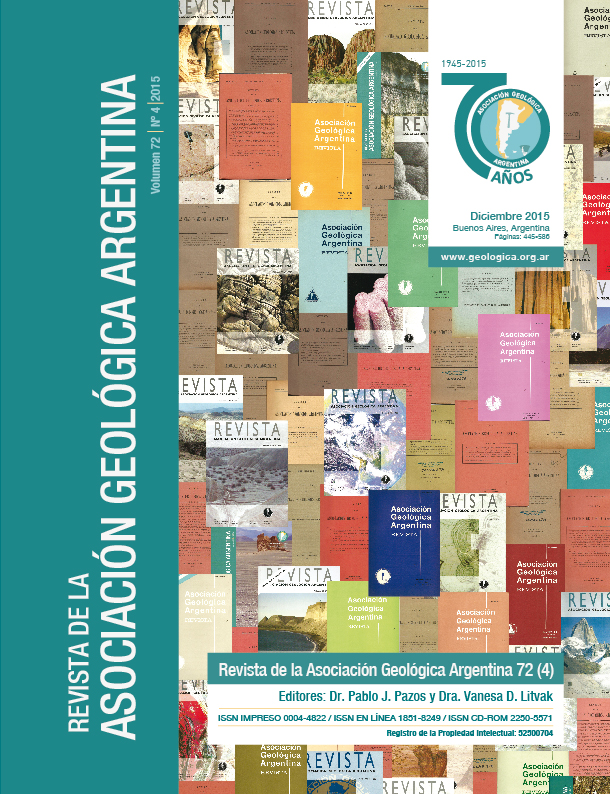La Aguadita trachyte: new exponent of Triassic alkaline magmatism in sierra de Valle Fértil, western Sierras Pampeanas
Main Article Content
Abstract
La Aguadita Trachyte, in Sierra de Valle Fértil, is a new outcrop referring to the Triassic alkaline magmatism. The trachyte body was emplaced along a NNW-trending fault zone overlying the crystalline basement. The trachyte consists mainly of anorthoclase and sanidine as pheno- and microphenocrysts, with lesser amounts of arfvedsonite and ferro-eckermannite in the groundmass. It is moderately evolved in composition with 66.5-69.1 wt.% SiO2 and exhibits a limited compositional range in most of the major elements. The rare earth elements (REE) pattern is somewhat uniform and highly fractionated, being enriched in light REE over heavy REE and showing a prominent negative Eu anomaly. The trachyte is enriched in high field strength elements Nb, Zr, and Y, consistent with typical intraplate alkaline magmatism under extensional tectonic regime. It is proposed to be genetically related with other alkaline volcanic rocks outcropping in the area, and generated from the same parental mantellic source (i.e., asthenospheric mantle source) through open-system fractional crystallization. eNd values of +2.6 are consistent with slightly crustal contamination during trachyte generation. Thus, La Aguadita Trachyte could be the result of a combination of fractional crystallization of mantle-derived basaltic magma and crustal assimilation. Radiometric age dating of 218 ± 7 Ma on the trachyte (K-Ar age, whole rock) expands the range of the Triassic alkaline volcanism known in the area to the Upper Triassic, and confirms a regional volcanic event related to uplift in an extensional tectonic environment.
Article Details

This work is licensed under a Creative Commons Attribution-NonCommercial 4.0 International License.
Nota de copyright
Los autores conservan los derechos de autor y garantizan a la revista el derecho de ser la primera publicación del trabajo licenciado según una licencia de atribución Creative Commons que permite a otros compartir el trabajo con el reconocimiento de la autoría y de la publicación en la que se publicó por primera vez.
Declaración de privacidad
Los nombres y direcciones de correo electrónico introducidos en esta revista se usarán exclusivamente para los fines declarados por esta revista y no estarán disponibles para ningún otro propósito u otra persona.

